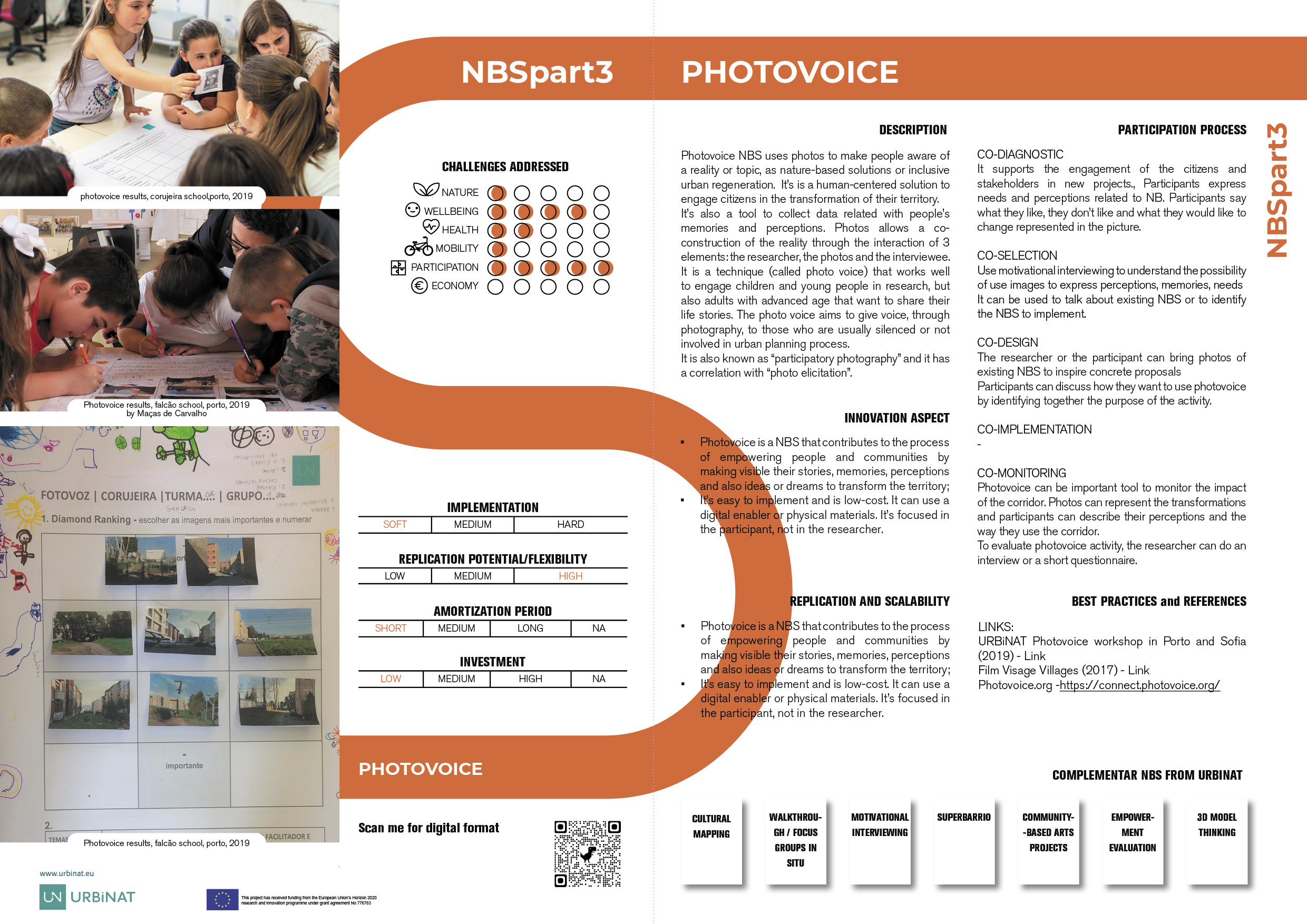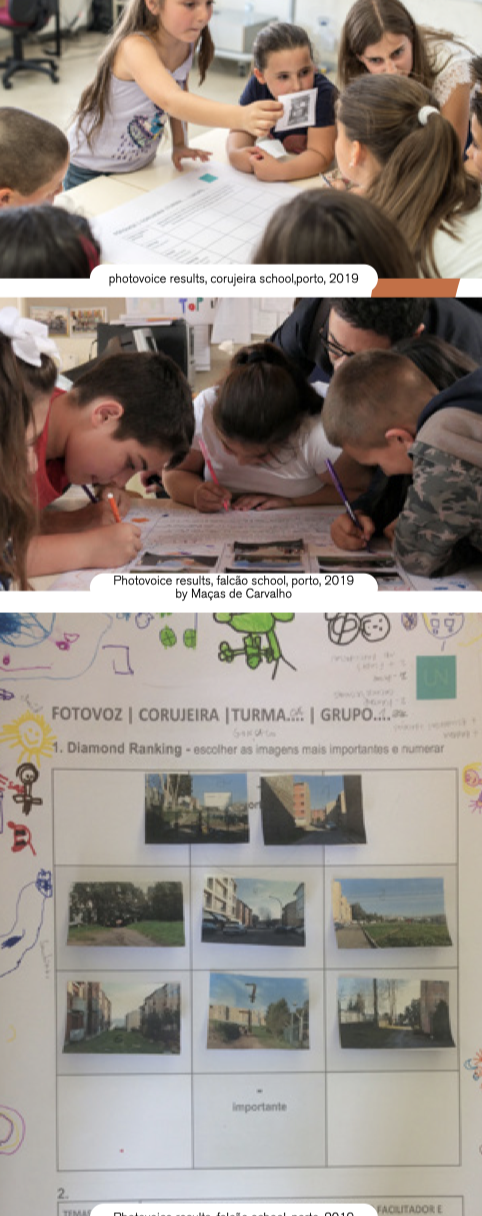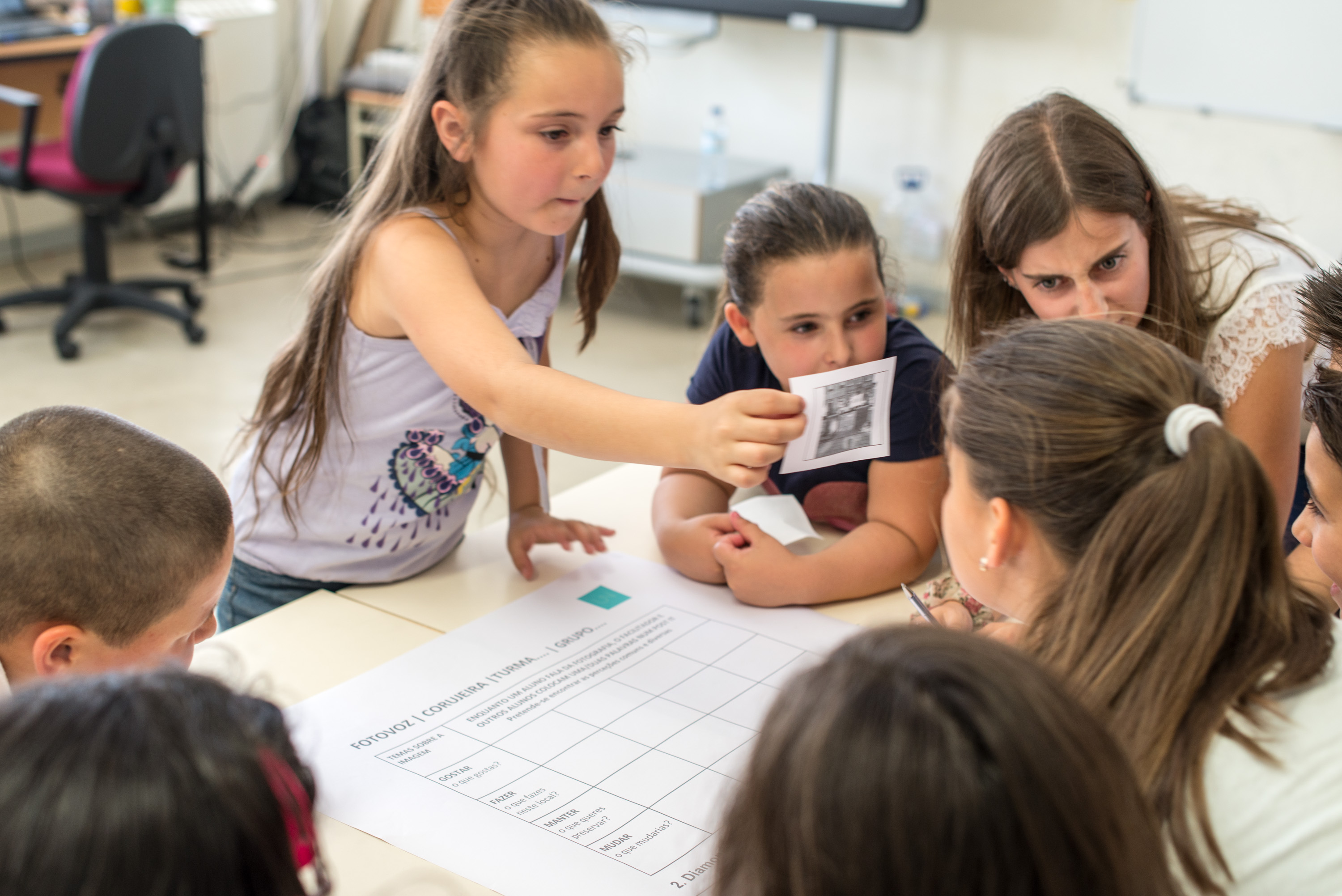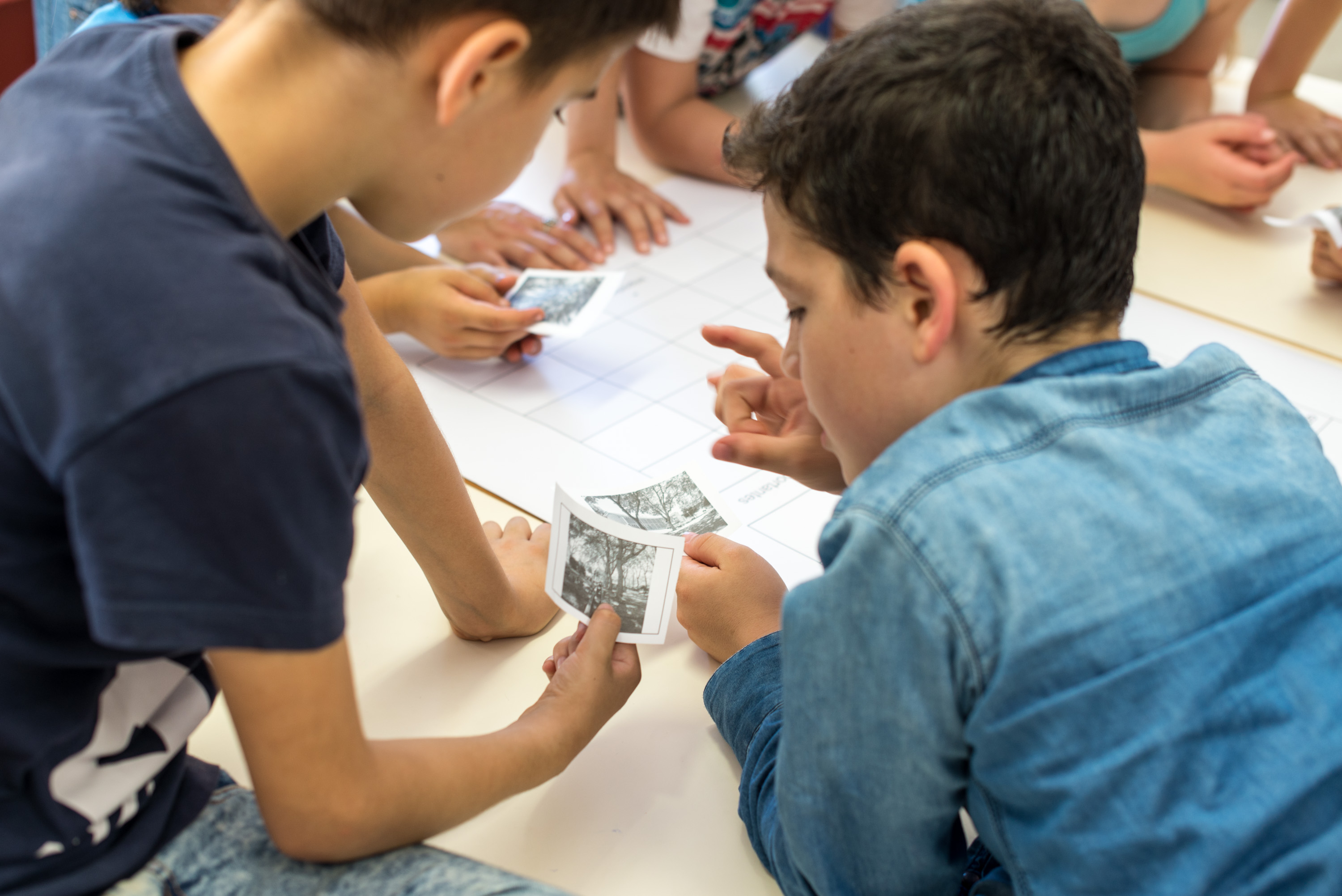Photovoice
CHALLENGES ADDRESSED
Score impact
Nature
Wellbeing
Health
Mobility
Participation
Economy
DESCRIPTION
Photovoice NBS uses photos to make people aware of a reality or topic, as nature-based solutions or inclusive urban regeneration. It’s is a human-centered solution to engage citizens in the transformation of their territory. It’s also a tool to collect data related with people’s memories and perceptions. Photos allows a coconstruction of the reality through the interaction of 3 elements: the researcher, the photos and the interviewee. It is a technique (called photo voice) that works well to engage children and young people in research, but also adults with advanced age that want to share their life stories. The photo voice aims to give voice, through photography, to those who are usually silenced or not involved in urban planning process.
It is also known as “participatory photography” and it has a correlation with “photo elicitation”.

[PDF Download] Photovoice
Photovoice NBS uses photos to make people aware of a reality or topic, as nature-based solutions or inclusive urban regeneration. It’s is a human-centered solution to engage citizens in the transformation of their territory. It’s also a tool to collect data related with people’s memories and perceptions. Photos allows a co- construction of the reality through the interaction of 3 elements: the researcher, the photos and the interviewee. It is a technique (called photo voice) that works well to engage children and young people in research, but also adults with advanced age that want to share their life stories. The photo voice aims to give voice, through photography, to those who are usually silenced or not involved in urban planning process.
It is also known as “participatory photography” and it has a correlation with “photo elicitation”.
INNOVATION ASPECT
• Photovoice is a NBS that contributes to the process of empowering people and communities by making visible their stories, memories, perceptions, and also ideas or dreams to transform the territory;
• It’s easy to implement and is low-cost. It can use a digital enabler or physical materials. It’s focused in the participant, not in the researcher.
REPLICATION AND SCALABILITY
• Photovoice is an NBS that contributes to the process of empowering people and communities by making visible their stories, memories, perceptions and also ideas or dreams to transform the territory;
• It’s easy to implement and is low-cost. It can use a digital enabler or physical materials. It’s focused in the participant, not in the researcher.
PARTICIPATION PROCESS

-
1
CO-DIAGNOSTIC
It supports the engagement of the citizens and stakeholders in new projects., Participants express needs and perceptions related to NB. Participants say what they like, they don’t like and what they would like to change represented in the picture.
-
2
CO-SELECTION
Use motivational interviewing to understand the possibility of use images to express perceptions, memories, needs It can be used to talk about existing NBS or to identify the NBS to implement.
-
3
CO-DESIGN
The researcher or the participant can bring photos of existing NBS to inspire concrete proposals Participants can discuss how they want to use photovoice by identifying together the purpose of the activity.
-
4
CO-MONITORING
Photovoice can be important tool to monitor the impact of the corridor. Photos can represent the transformations and participants can describe their perceptions and the way they use the corridor. To evaluate photovoice activity, the researcher can do an interview or a short questionnaire.
BEST PRACTICES and REFERENCES
LINKS:
URBiNAT Photovoice workshop in Porto and Sofia (2019) – Link
Film Visage Villages (2017) – Link
Photovoice.org –https://connect.photovoice.org/




